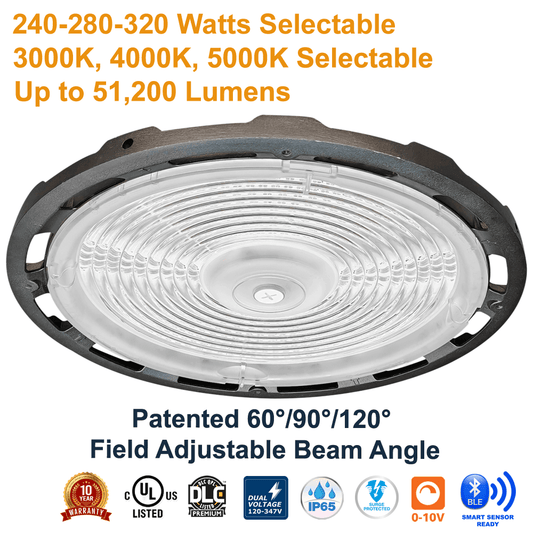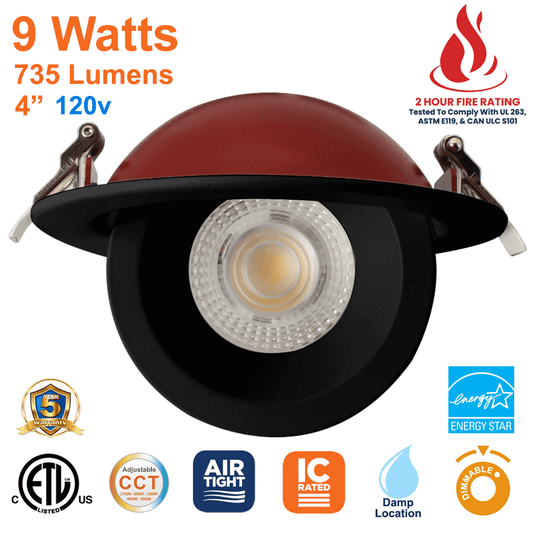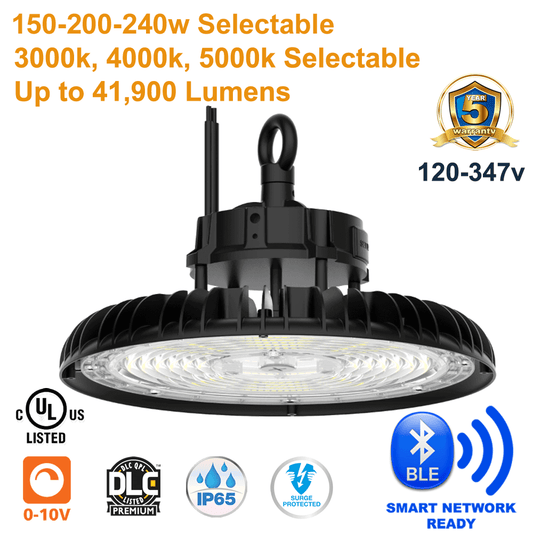Do you find yourself perplexed by the terminology on the packaging of your new LED Pot Lights or perhaps, your fresh out of the box LED High Bay? Have you ever wondered what 'Lumens' mean on your light bulb's label? In the ever-evolving world of LED lighting, understanding lumens can give you greater control over your lighting environment, whether it's a sprawling commercial space or a cozy lounge setup.
The Illuminating World of Lumens
In the simplest terms, lumens are the units that measure the amount of light emitted by a light source - say, your trusty LED lamp or that snazzy LED Panel Light illuminating your workspace. To visualize it, imagine a birthday candle. When you light it, the light it emits in a space of one square foot is approximately one lumen.
Tip: If you are shopping for lighting solutions for larger spaces, remember: the greater the lumen count, the brighter the light.
The Brightness Quotient
Let's address a common misconception here: a bulb's wattage does not determine its brightness. What does then? You guessed it - Lumens! Whether it's a humble Light Bulb or a more powerful LED Flood Light, the lumen count is what you should be focusing on for brighter spaces.
While measuring lumens might seem complicated, the process is standardized, ensuring a level playing field for all LED chips, light bulbs and light fixtures. Light output is measured using an integrated sphere, which captures and measures the light emitted from the bulb.
The Distance Dilemma
Does distance affect lumens? The answer is a resounding yes. It's a bit like being at a concert. If you're right next to the speaker, the music is going to be much louder compared to if you were sitting at the back. Similarly, as you move away from a light source, the brightness decreases.
Understanding Lumen Maintenance
But how do you ensure that your commercial lighting solutions, like those really bright new LED Area Lights you just installed, maintain their brightness over time? Enter the world of lumen maintenance.
Lumen maintenance is a measure of how well a lighting source retains its brightness over time, and it's typically represented as a percentage. For instance, if an LED light fixture has a lumen maintenance of 70% after 50,000 hours, it means the lamp will provide 70% of its original light output after being used for 50,000 hours.
To calculate this, lighting manufacturers usually provide lumen maintenance data or curves, showing how the light output of a product is expected to decrease over time.
Now, you might wonder, what's the lumen maintenance factor? The lumen maintenance factor, or LMF, takes into account the decrease in light output (lumen depreciation) as well as the failures of a percentage of LEDs in a given installation. An LMF of 0.7, for example, would mean that at the end of the rated life, we can expect the installation to provide 70% of the initial light output.
Stay tuned for the next part of our article where we discuss factors affecting lumen maintenance and explore the intricacies of lumen depreciation.
Influencing Factors: The Highs and Lows of Lumen Maintenance
When it comes to lumen maintenance, several factors can either lengthen or shorten its span. In the world of LED lighting, ambient temperature, operating current, and heat sinking are critical elements that can impact the light output of your LED Corn Bulbs, for instance.
Exposure to high temperatures or being subjected to higher than rated operating current can accelerate lumen depreciation, thereby reducing the lifespan of the LED light. Good heat sinking, on the other hand, can dissipate the heat more efficiently, thus lengthening lumen maintenance.
Takeaway: Proper installation and maintenance can play a crucial role in ensuring the longevity of your LED lights.
The Colour Temperature Connection
Does the colour temperature affect lumen maintenance? It certainly does. The colour temperature, which measures the light colour's warmth or coolness, can influence the perceived brightness of the light.
As we've covered in our guide to Colour Temperature, cooler light (higher Kelvin rating) might appear brighter to the human eye than warmer light (lower Kelvin rating), even if the lumen output is the same. Thus, the colour temperature can indirectly impact how we perceive lumen maintenance.
Lumen Depreciation and Maintenance: A Comparative Study
So far, we have focused on lumen maintenance, but what about lumen depreciation? While they might seem similar, there's a key difference. Lumen depreciation refers to the decrease in lumen output that occurs as a light source ages. On the other hand, lumen maintenance quantifies the light output that remains after a specific period.
Fun Fact: Lumen depreciation is the reason why your UFO High Bay LED lights don’t shine as brightly as they did when they were brand new. But it will take years until it’s noticeable!
While lumen maintenance focuses on the positive aspect (the light that remains), lumen depreciation concentrates on the loss (the light that disappears). Understanding this difference can help you make more informed decisions when buying and replacing your LED lights.
In the next and final section, we will take you through a guide on how to calculate how many lumens you need for your lighting spaces and provide some tips on what's considered good lighting. Stay tuned!
The Lumen Mystery: Distance and Light Output
How many times have you installed a bright LED Flood Light only to find the illumination doesn't reach as far as you'd like? The answer to this conundrum lies in the inverse square law, a fundamental principle of physics.
According to this law, the intensity of light (measured in lumens) decreases proportionally to the square of the distance from the light source. That's why even a highly luminescent LED Area Light appears less bright when you move away from it.
Lighting Tip: For effective illumination, consider both the lumen output and the distance of the light source from the area you want to light.
What Makes 'Good Lighting'?
How many lumens are considered 'good lighting'? Well, the answer depends on the specific lighting requirements of a space. For example, a workspace might require brighter, high-lumen lighting, while a bedroom or a cozy restaurant might need softer, low-lumen lights.
As a general rule of thumb, here's a quick reference:
- Reading and task areas: 400-800 lumens
- Dining or living rooms: 250-500 lumens
- Bedrooms: 200-400 lumens
This can vary depending on factors like room size, color, and personal preference. So, it's important to customize your lighting to suit your specific needs.
How to Calculate Lumens for Your Lighting
Finally, let's touch upon how to calculate how many lumens you need for your lighting spaces. To do this, you first need to calculate the room's square footage (length x width).
Next, multiply this number by 20 to get a rough estimate of the total lumens needed for a room with moderate lighting or by 50 for a brightly lit space. For example, a 10x10 room would need approximately 2,000-5,000 lumens.
Remember: This is a basic guideline. Individual lighting needs can vary depending on the intended use of the space, the color scheme, and personal preferences.
In conclusion, understanding lumens can give you more control over your lighting decisions, whether you're illuminating a large commercial warehouse or setting up a cozy corner in your home. LED lighting, with its high lumen output and efficient energy consumption, provides a flexible solution for diverse lighting needs.
At LED Network, we're dedicated to empowering you with knowledge and providing high-quality LED lighting solutions. For more insights into LED lighting, check out our blog or explore our wide range of collections. Happy lighting!



























